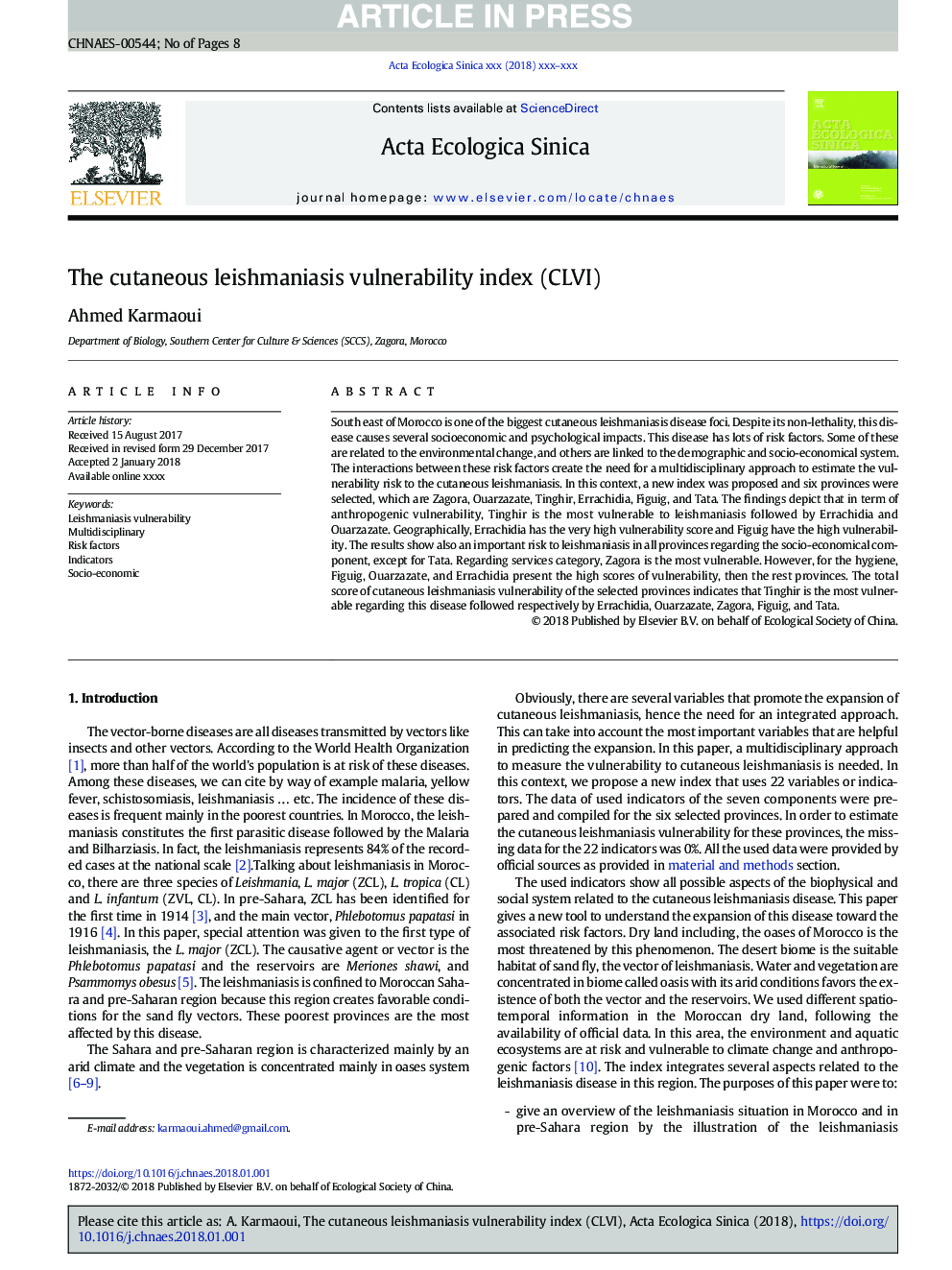| Article ID | Journal | Published Year | Pages | File Type |
|---|---|---|---|---|
| 8846275 | Acta Ecologica Sinica | 2018 | 8 Pages |
Abstract
South east of Morocco is one of the biggest cutaneous leishmaniasis disease foci. Despite its non-lethality, this disease causes several socioeconomic and psychological impacts. This disease has lots of risk factors. Some of these are related to the environmental change, and others are linked to the demographic and socio-economical system. The interactions between these risk factors create the need for a multidisciplinary approach to estimate the vulnerability risk to the cutaneous leishmaniasis. In this context, a new index was proposed and six provinces were selected, which are Zagora, Ouarzazate, Tinghir, Errachidia, Figuig, and Tata. The findings depict that in term of anthropogenic vulnerability, Tinghir is the most vulnerable to leishmaniasis followed by Errachidia and Ouarzazate. Geographically, Errachidia has the very high vulnerability score and Figuig have the high vulnerability. The results show also an important risk to leishmaniasis in all provinces regarding the socio-economical component, except for Tata. Regarding services category, Zagora is the most vulnerable. However, for the hygiene, Figuig, Ouarzazate, and Errachidia present the high scores of vulnerability, then the rest provinces. The total score of cutaneous leishmaniasis vulnerability of the selected provinces indicates that Tinghir is the most vulnerable regarding this disease followed respectively by Errachidia, Ouarzazate, Zagora, Figuig, and Tata.
Related Topics
Life Sciences
Agricultural and Biological Sciences
Ecology, Evolution, Behavior and Systematics
Authors
Ahmed Karmaoui,
